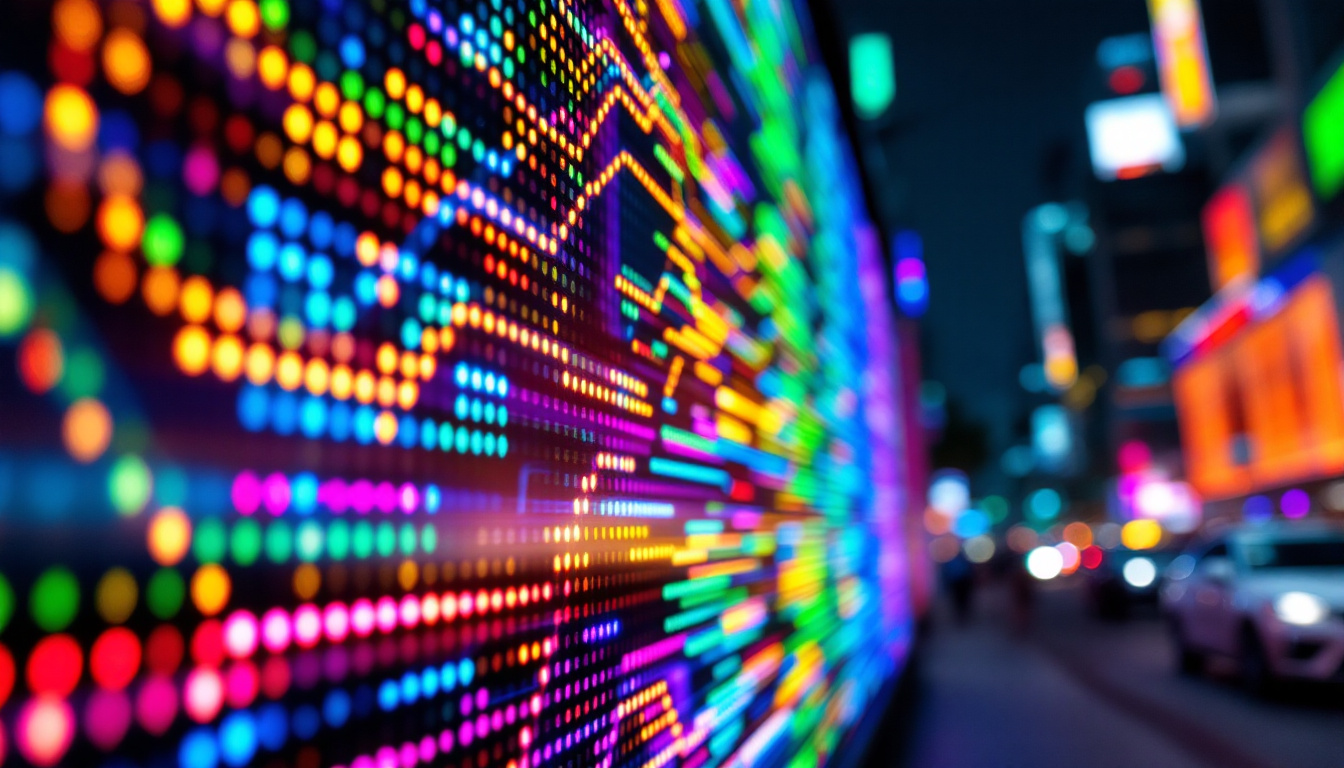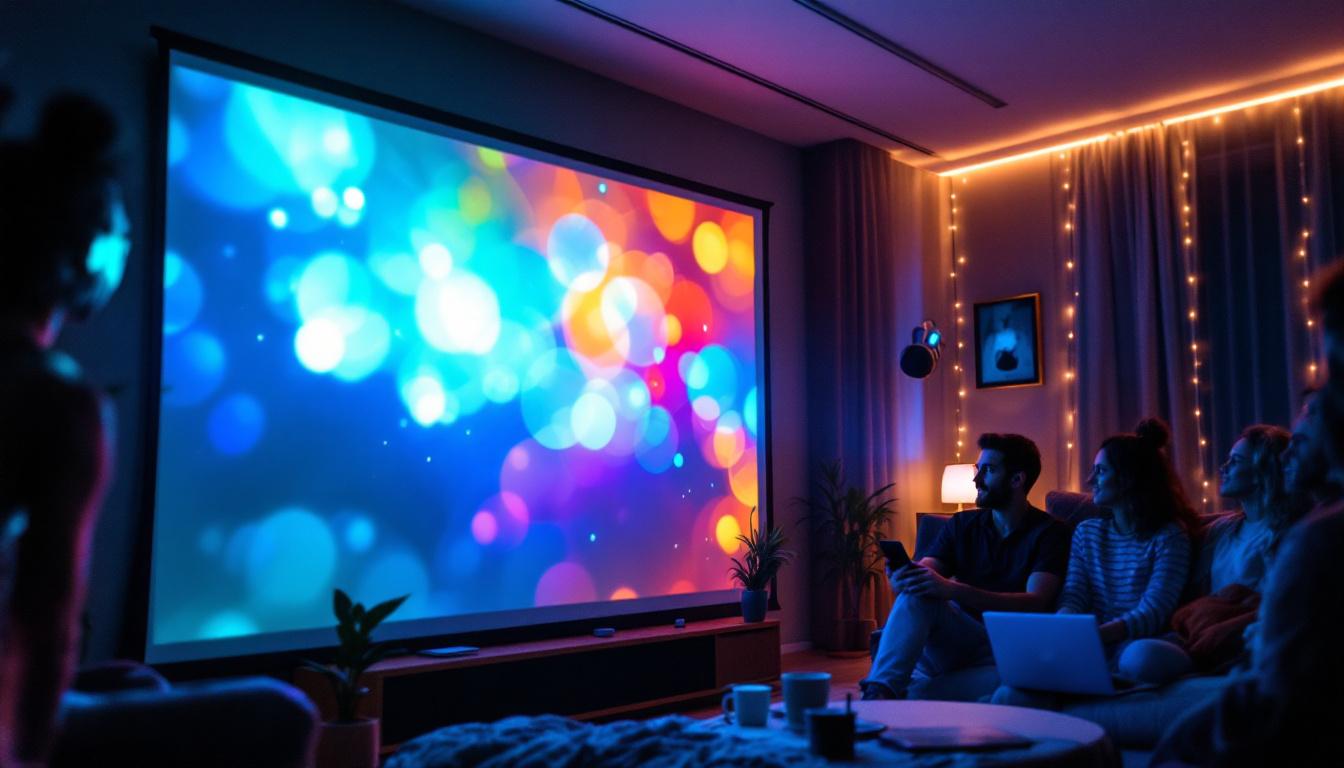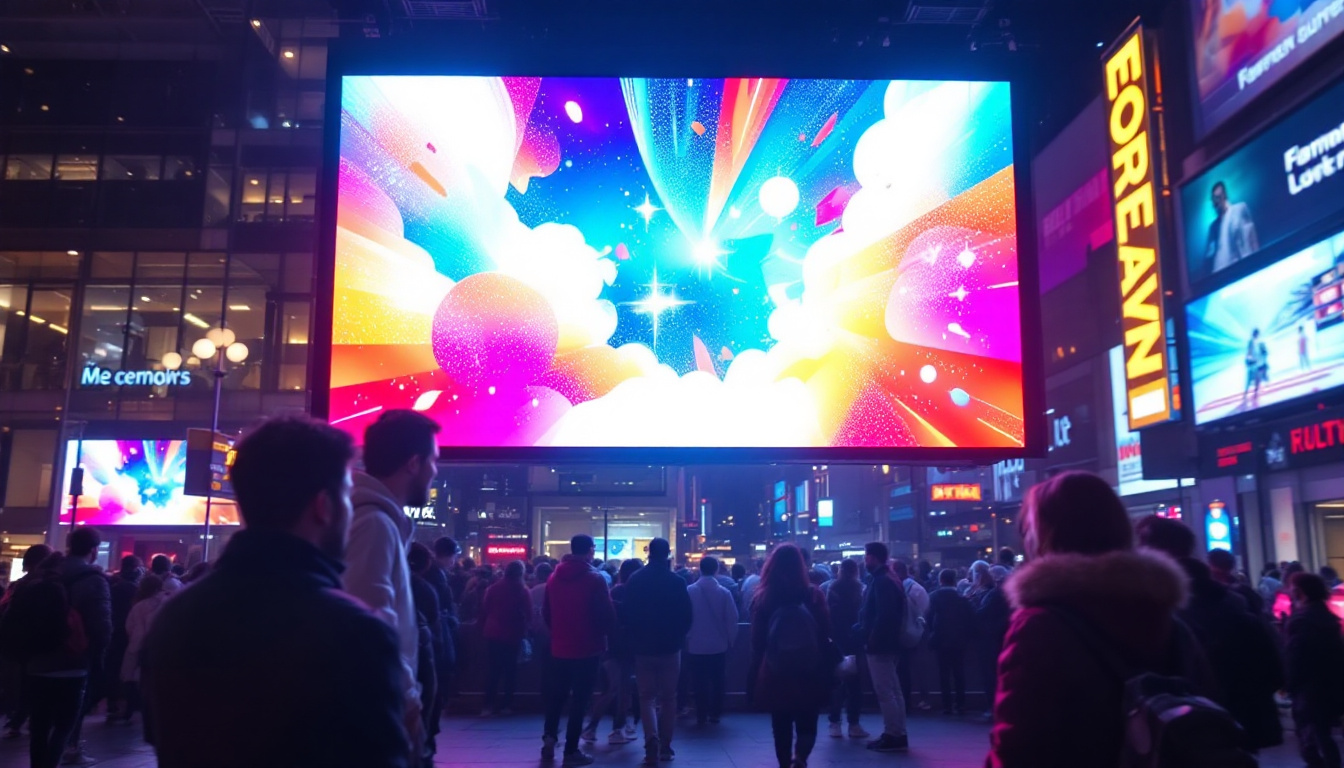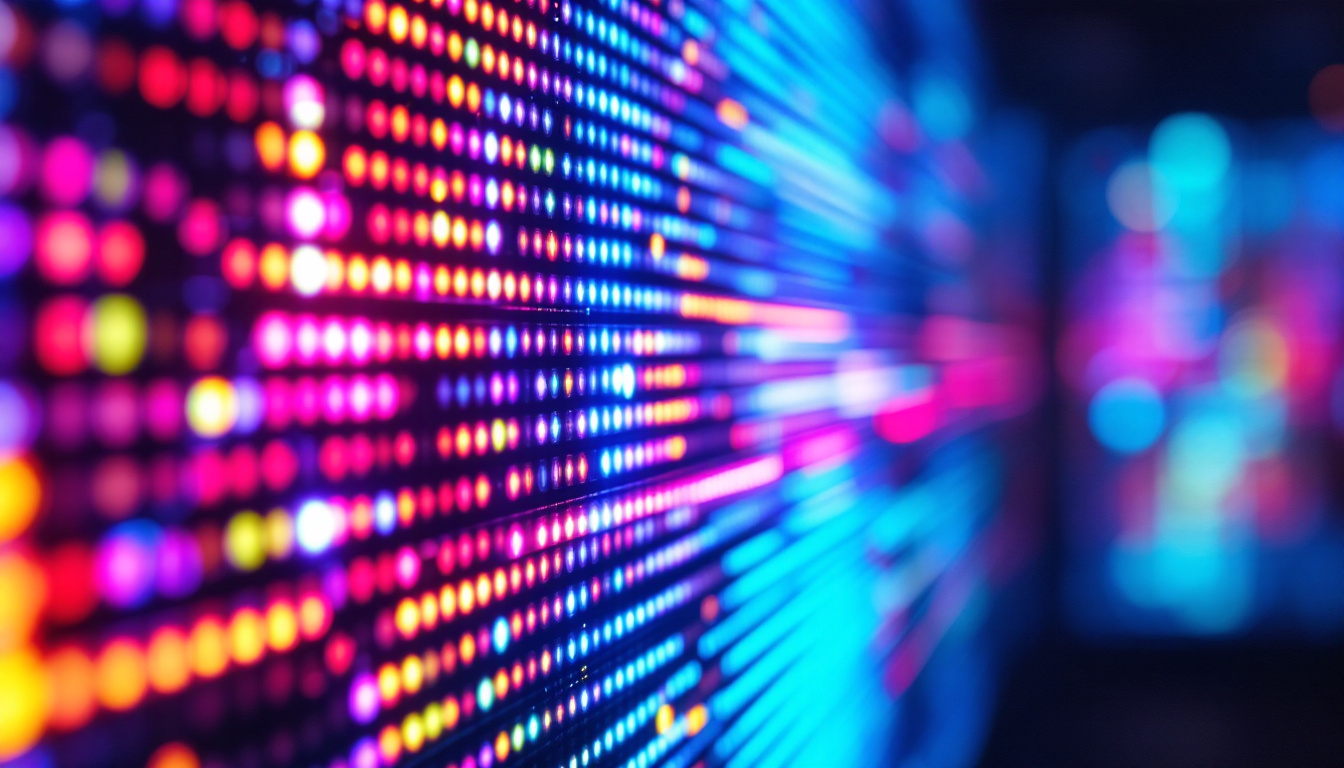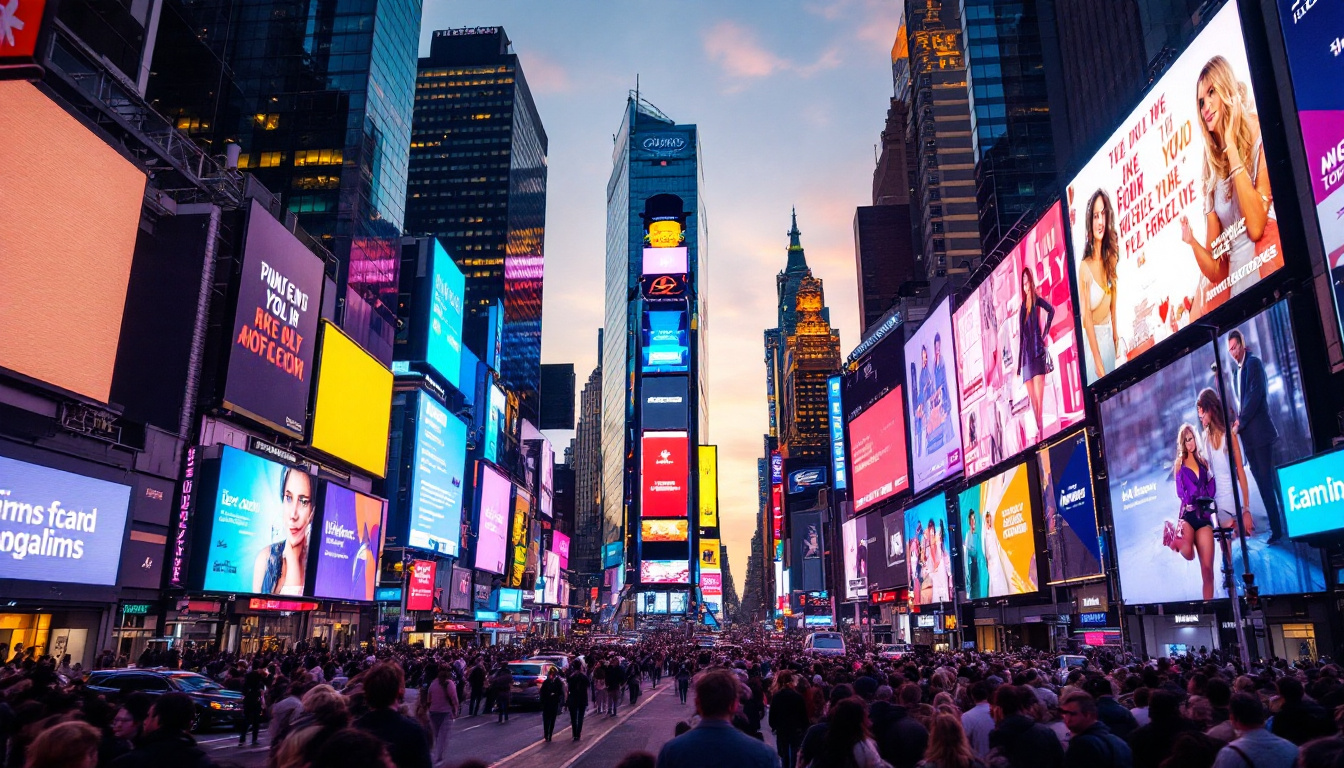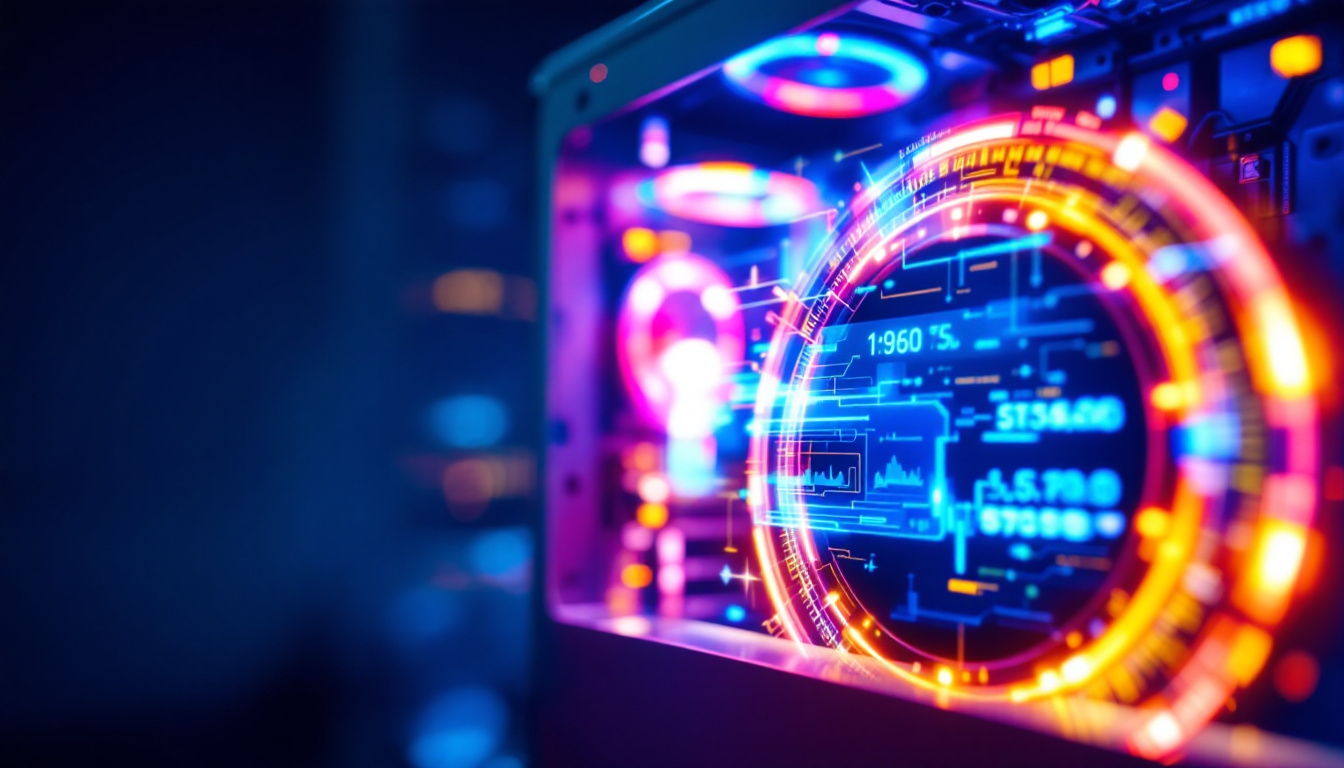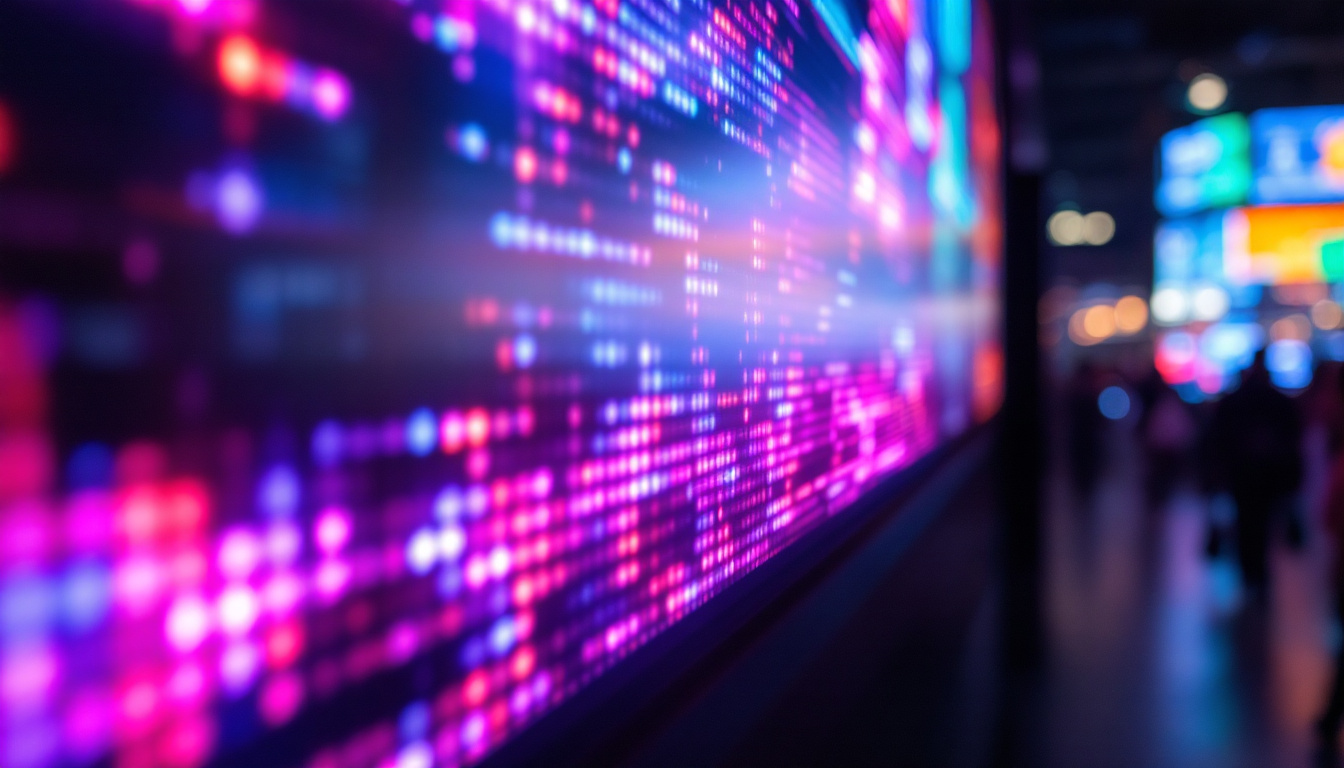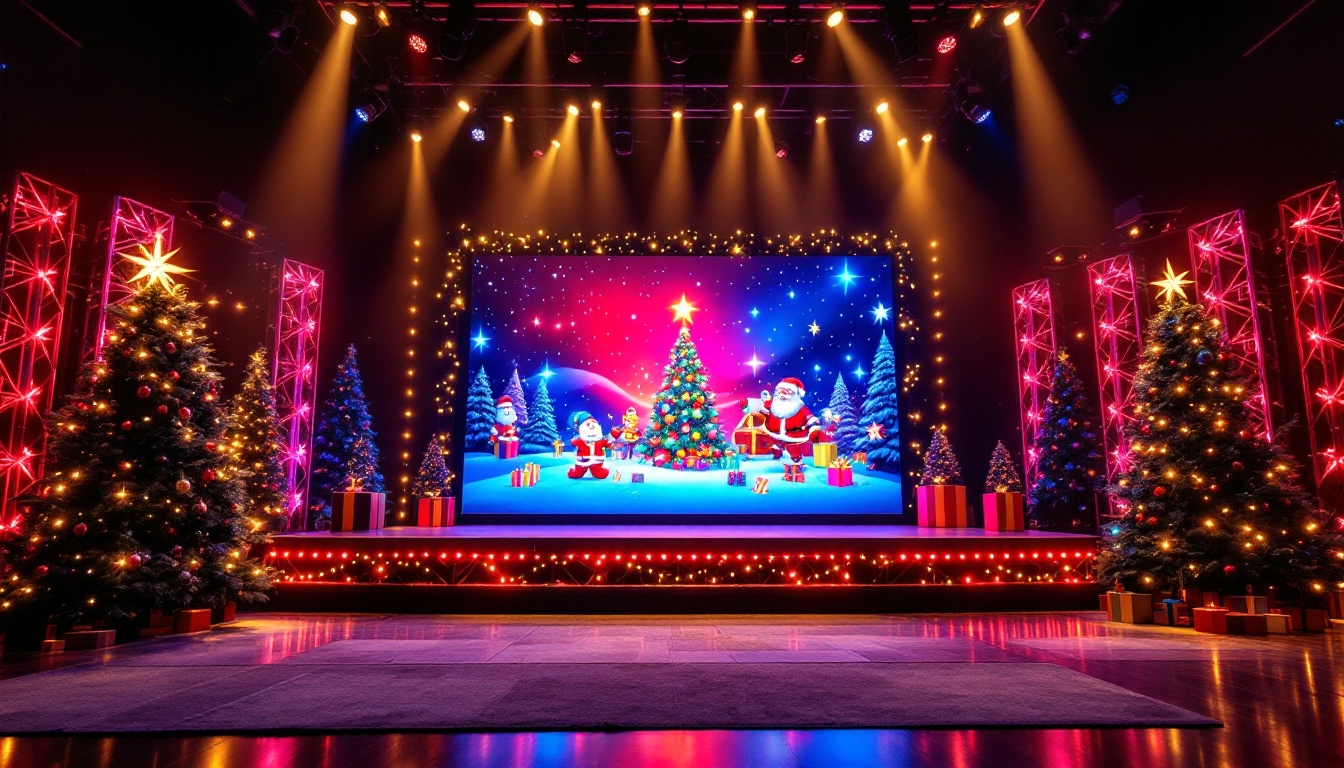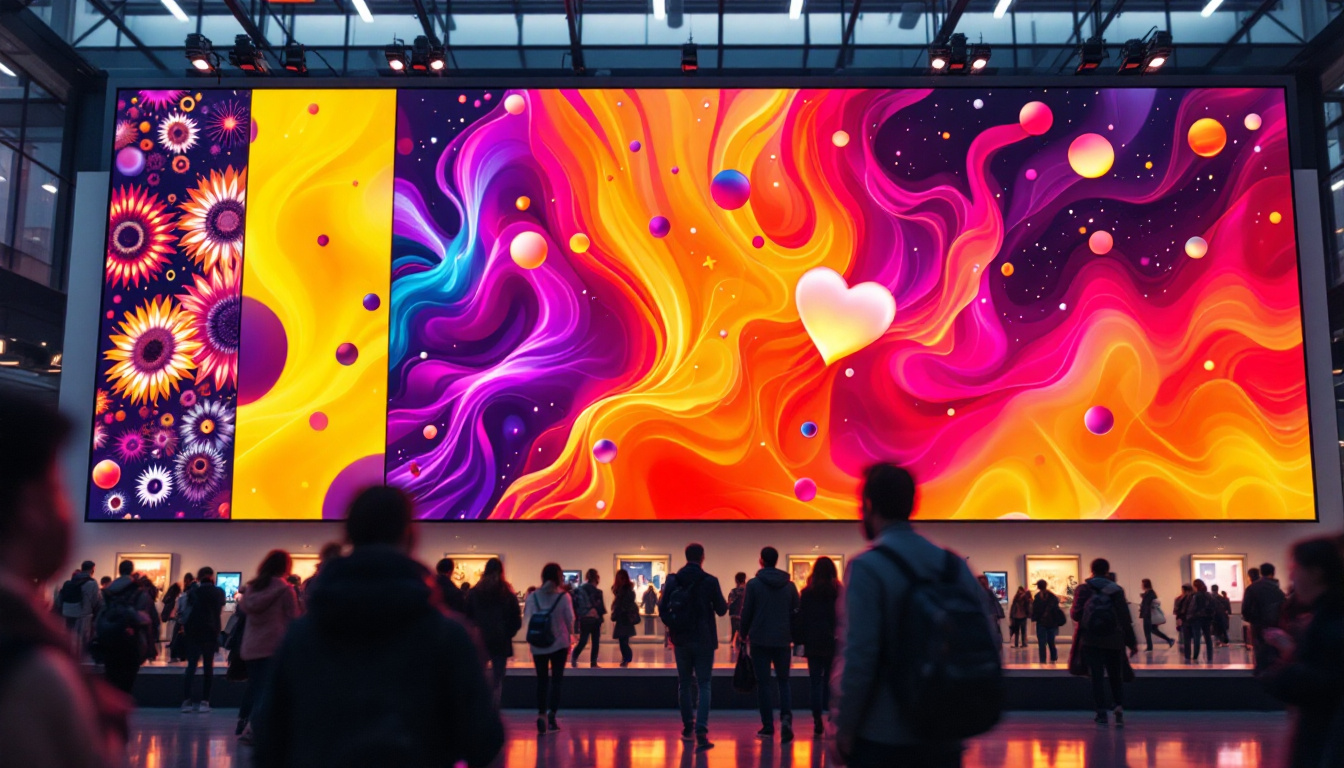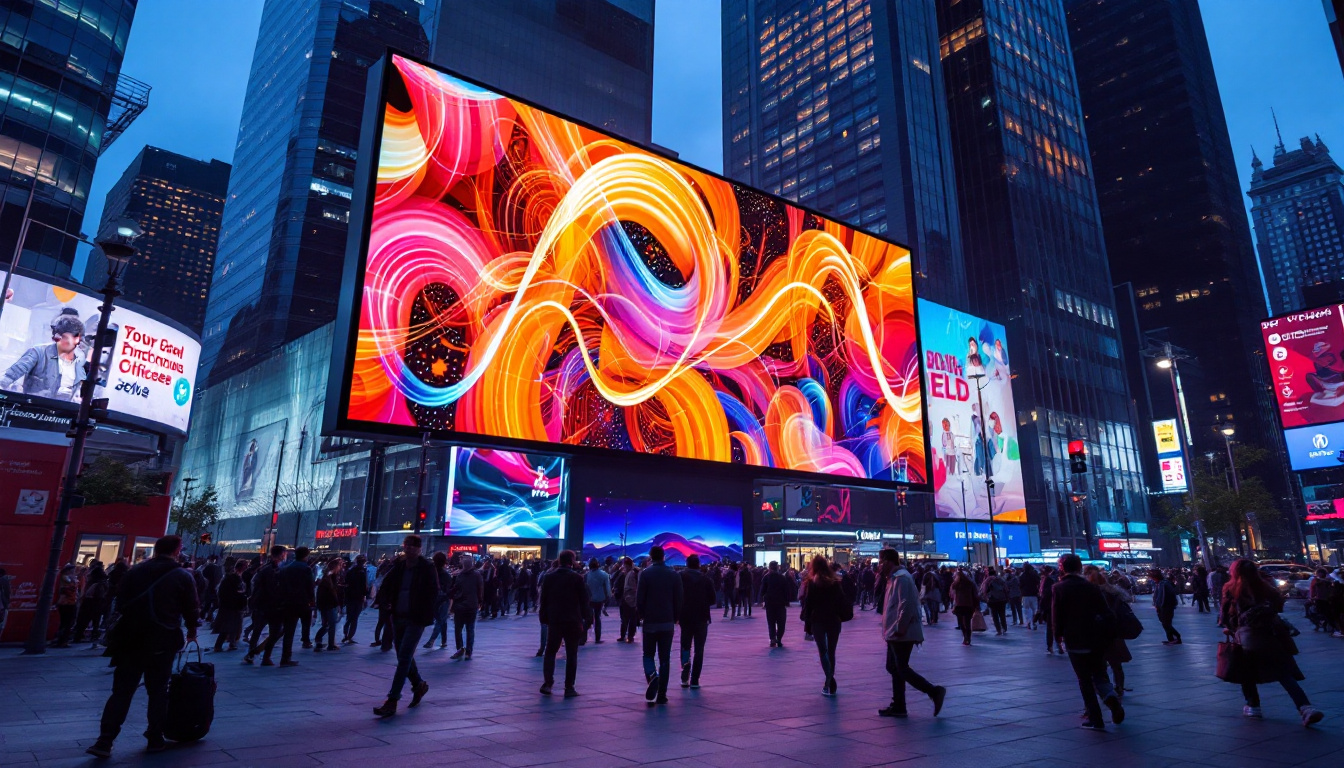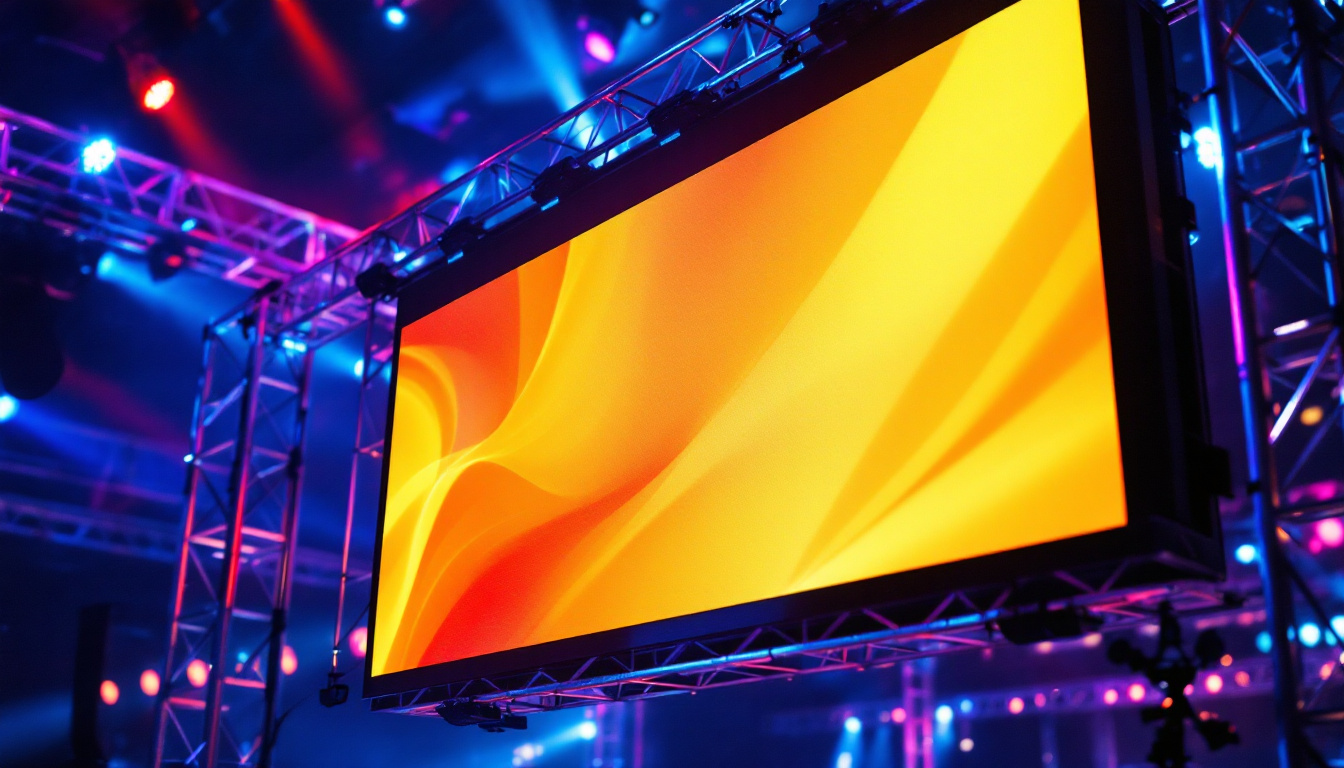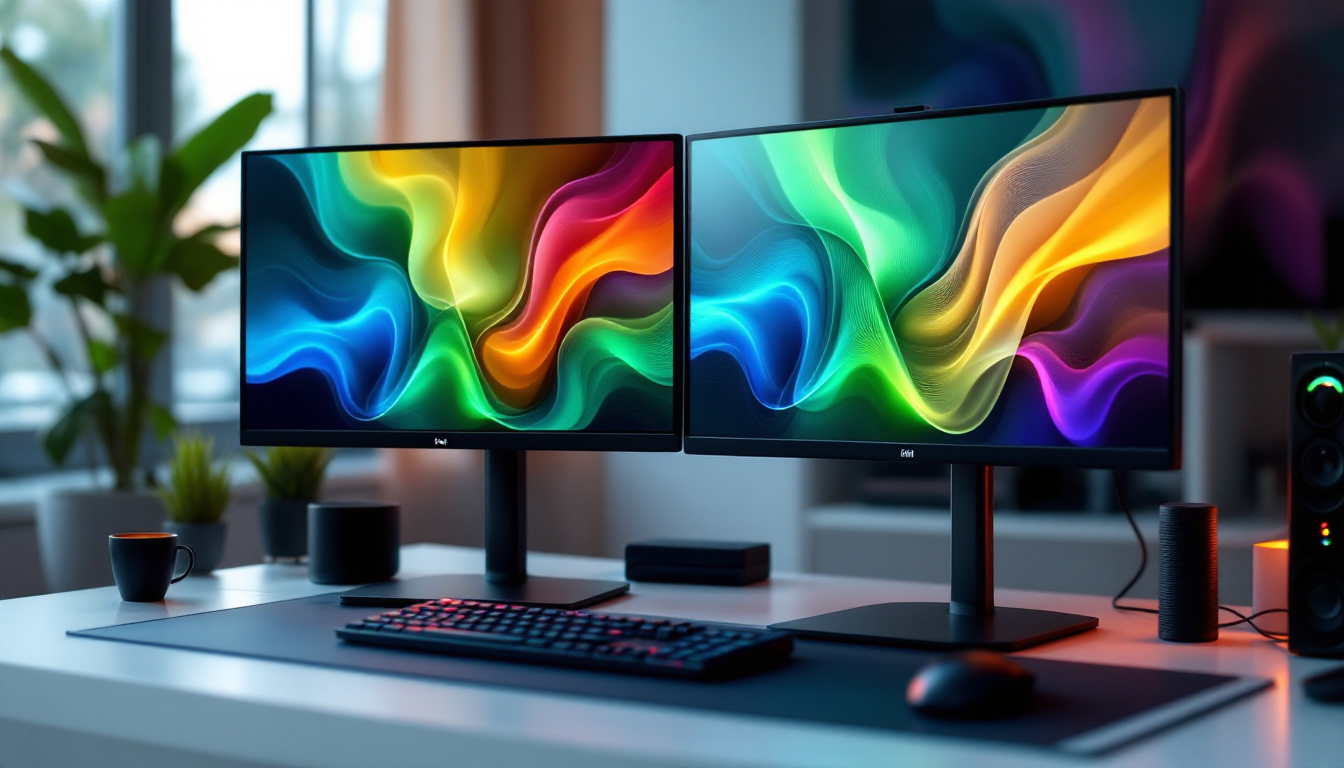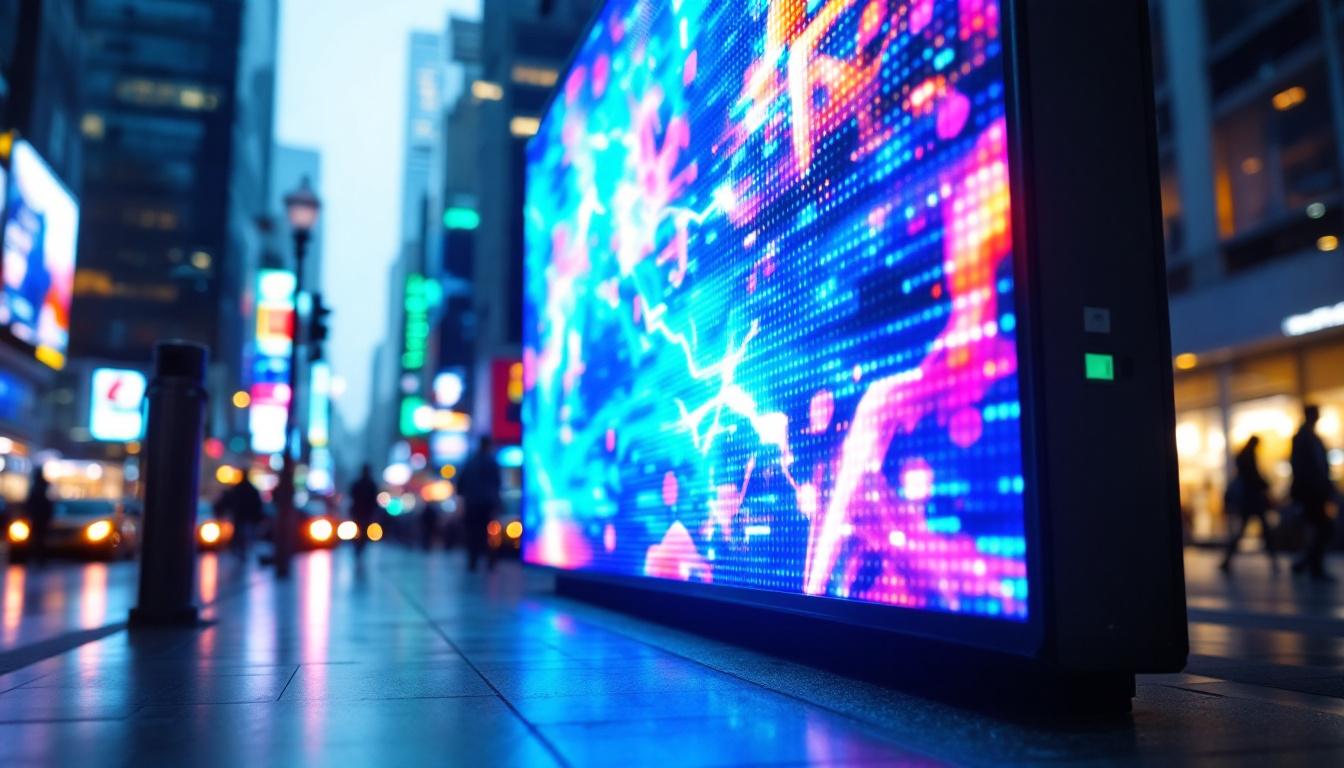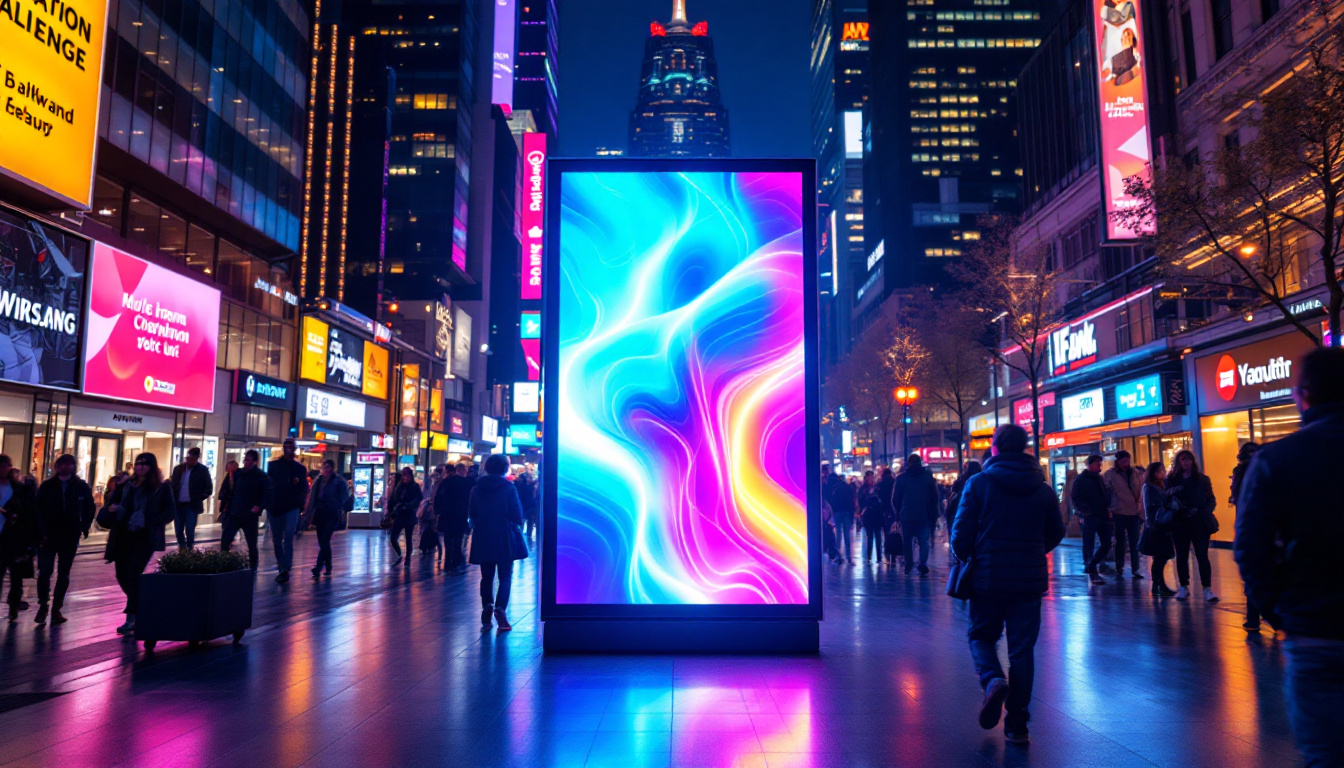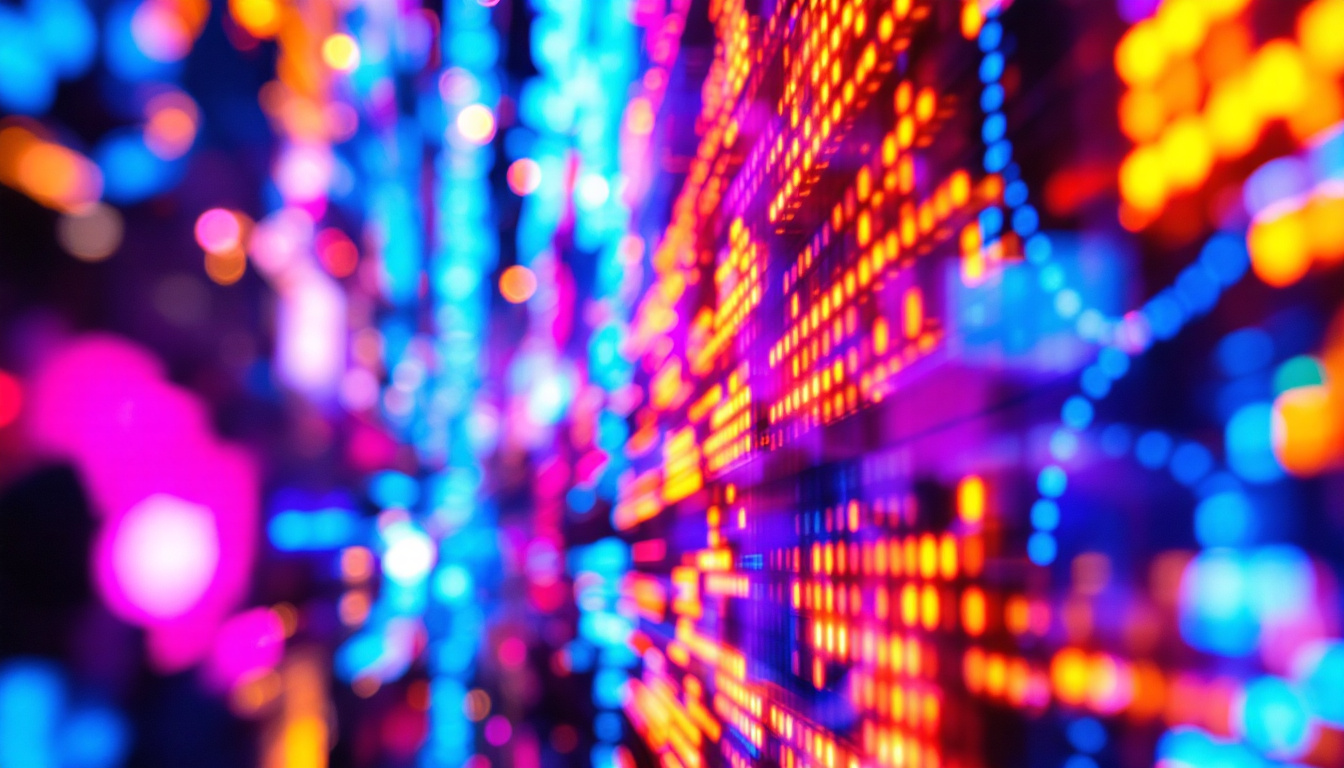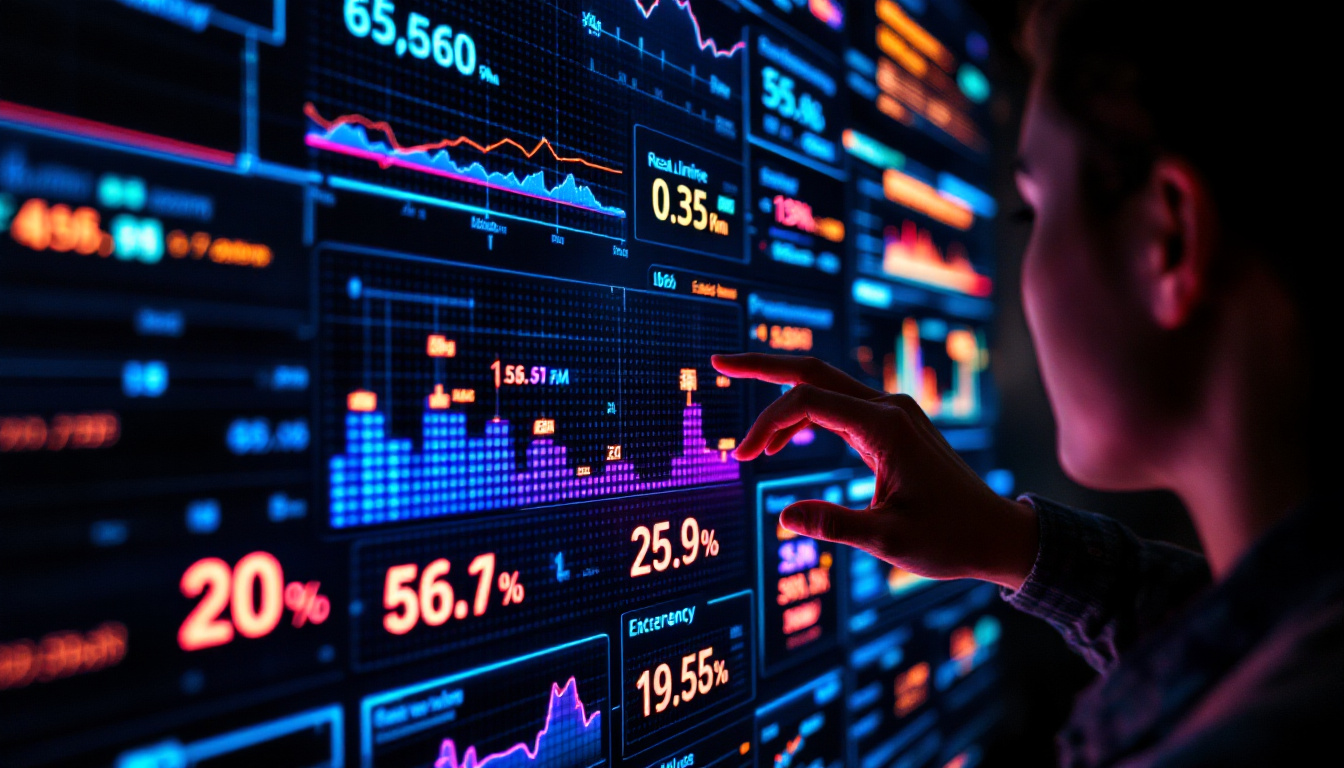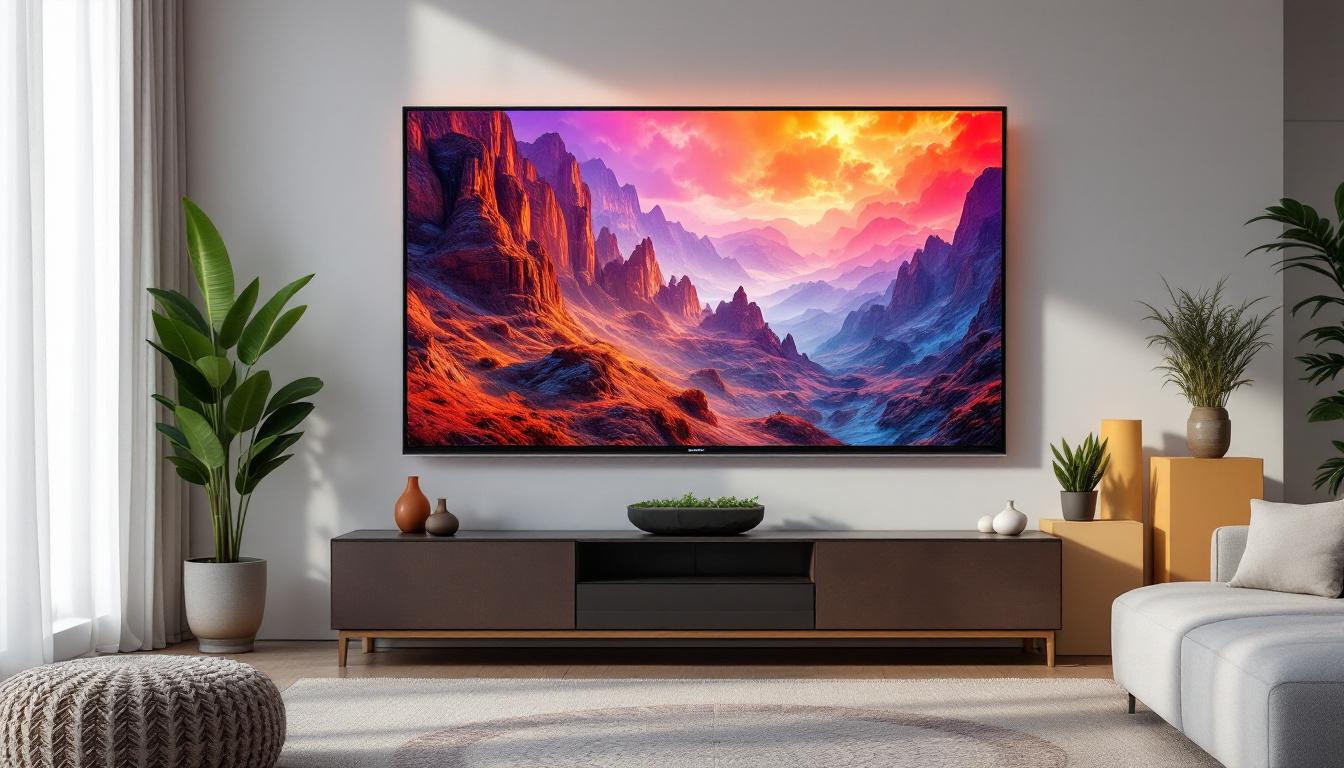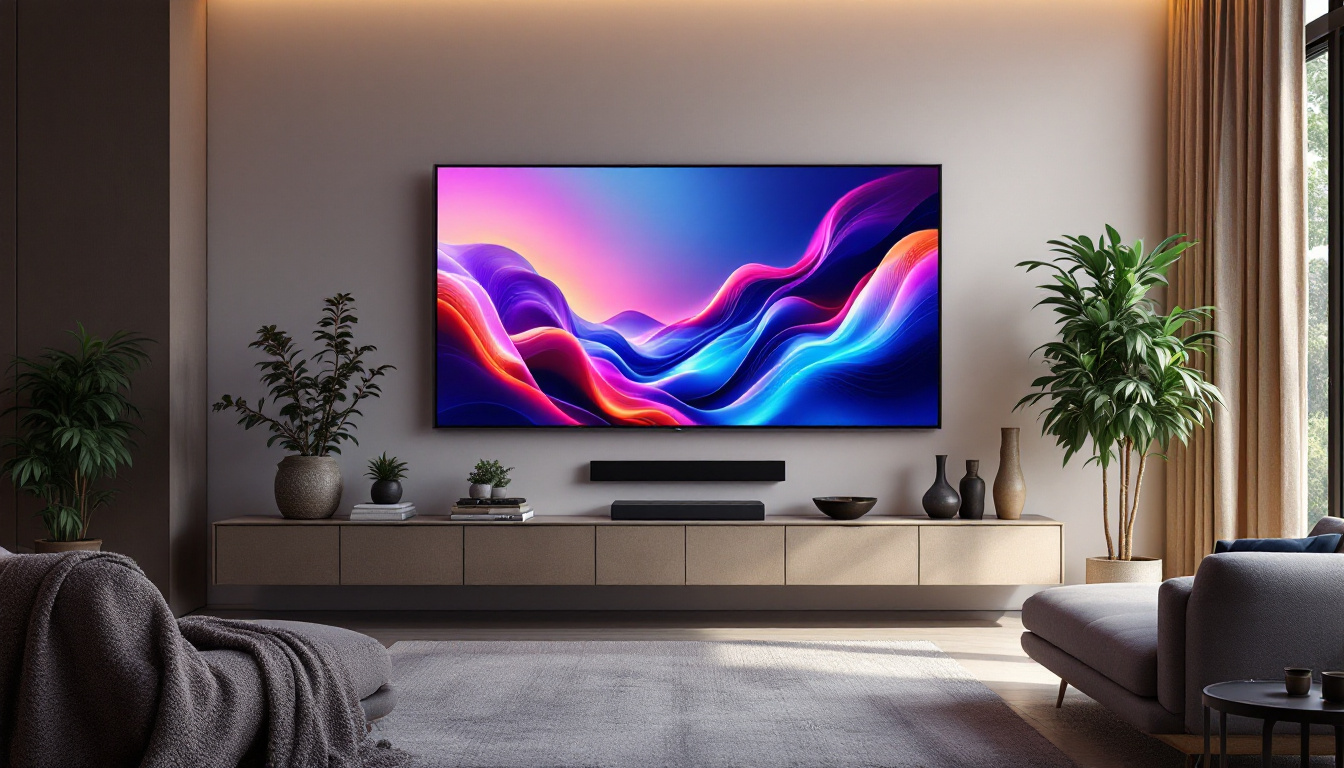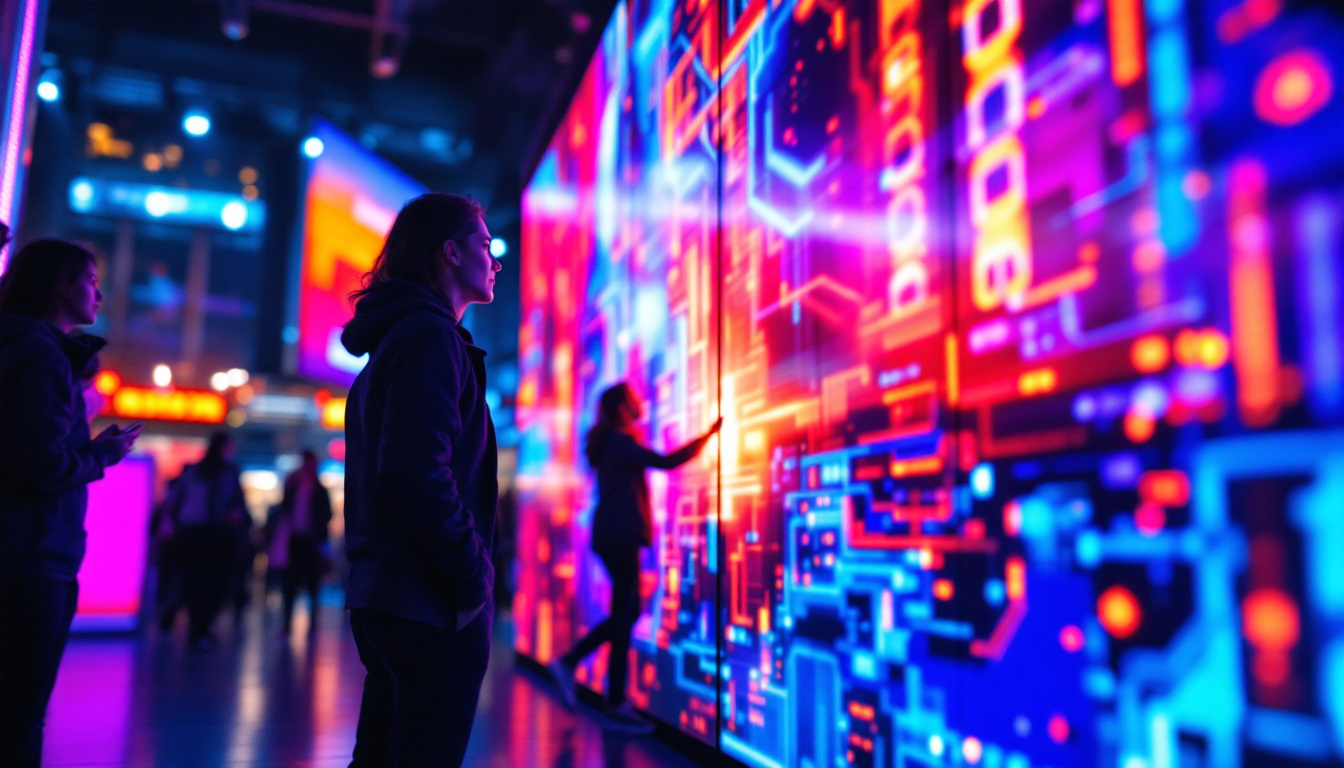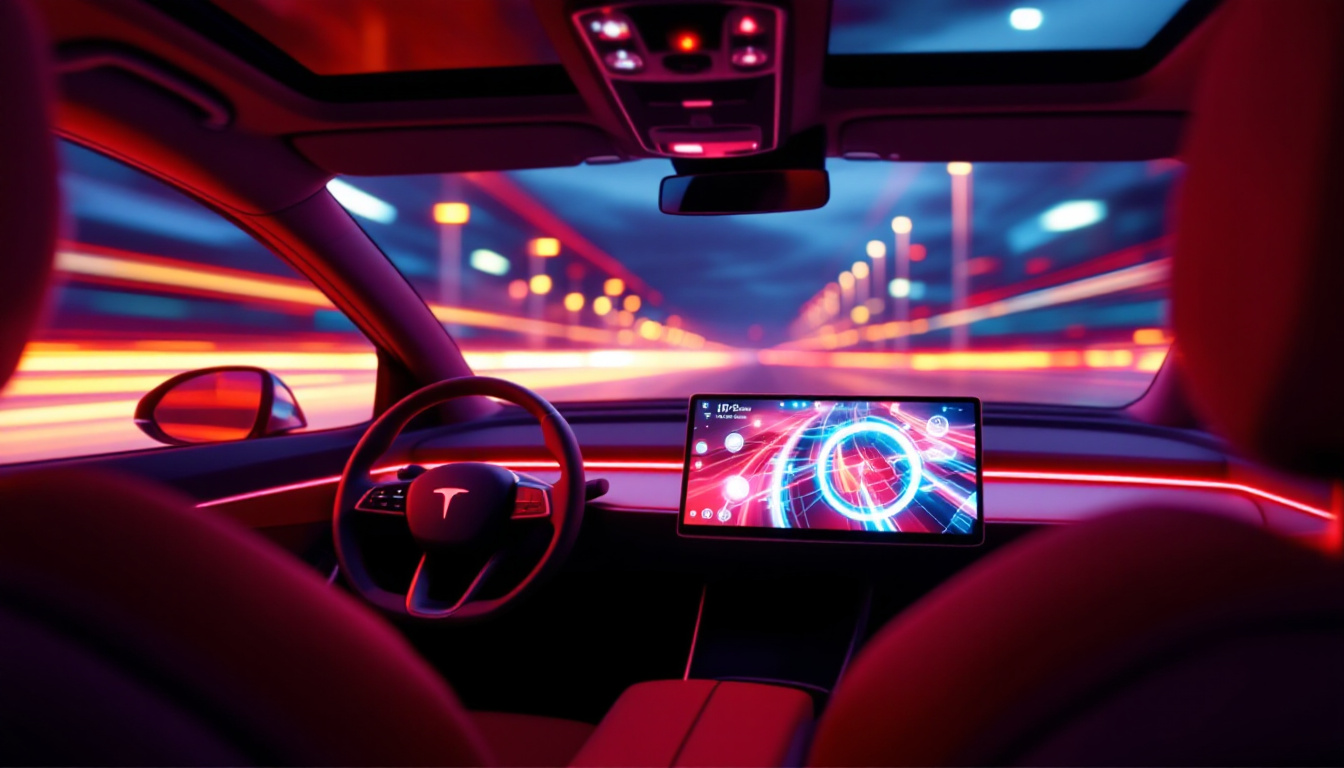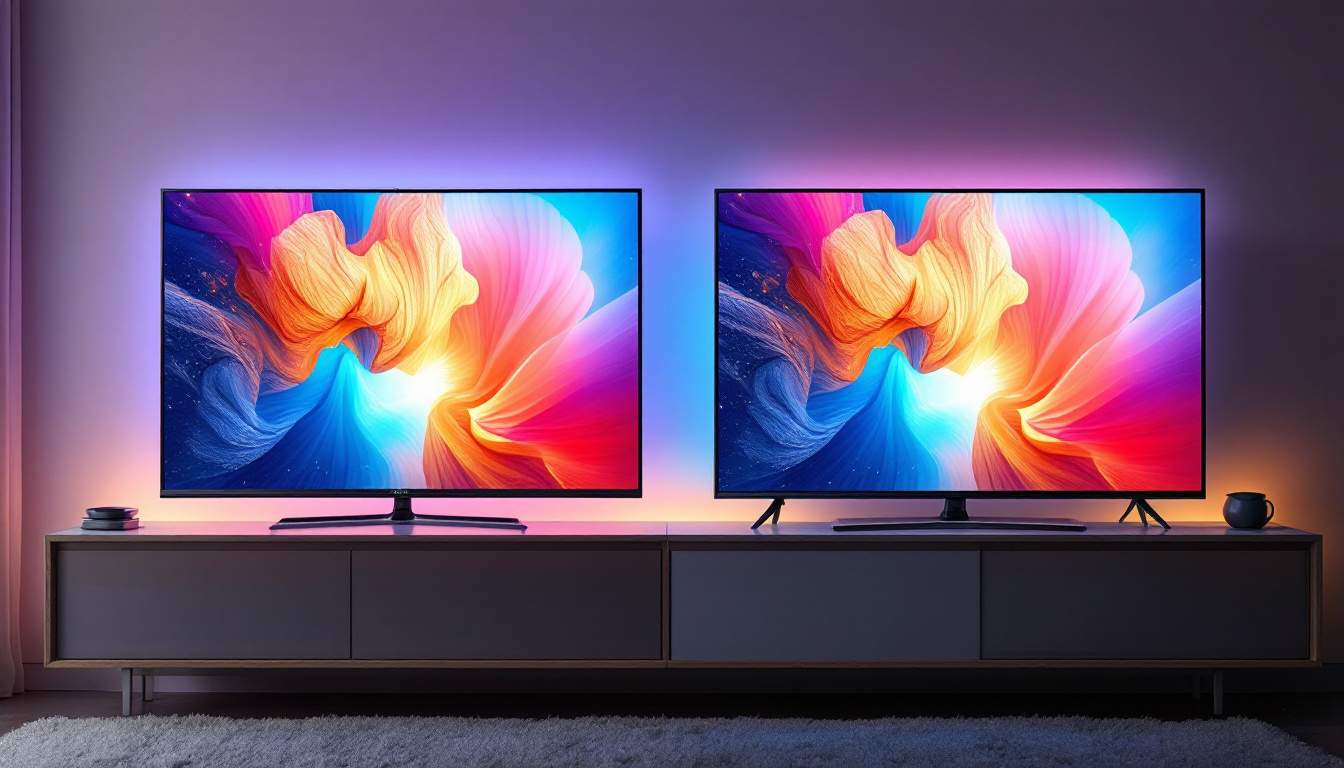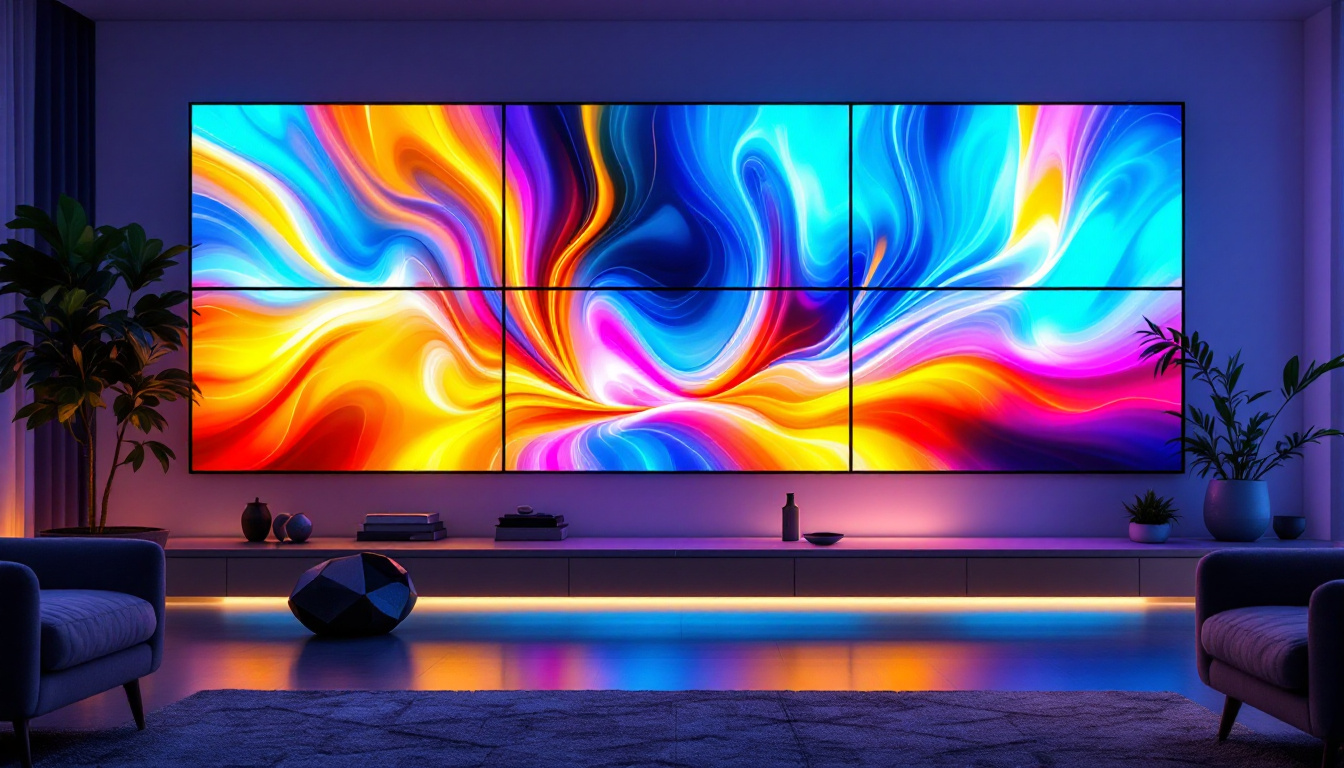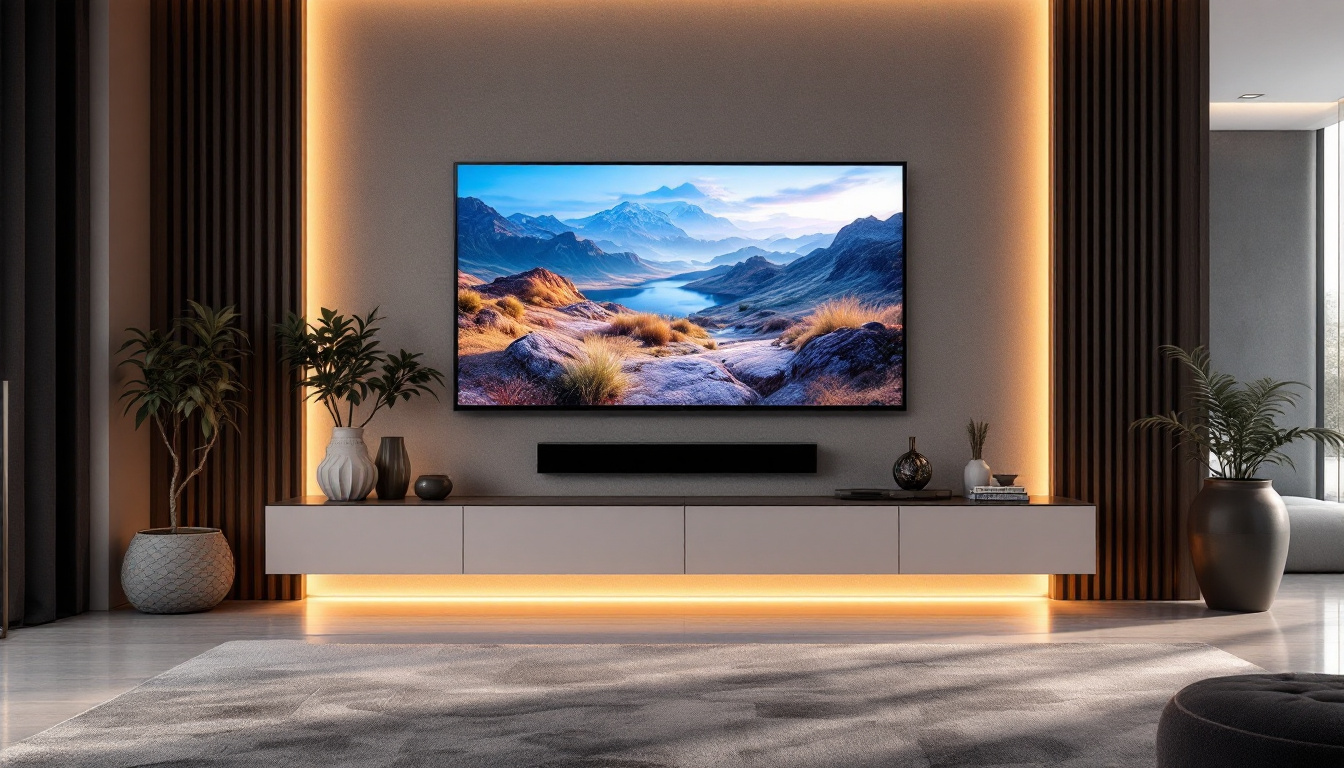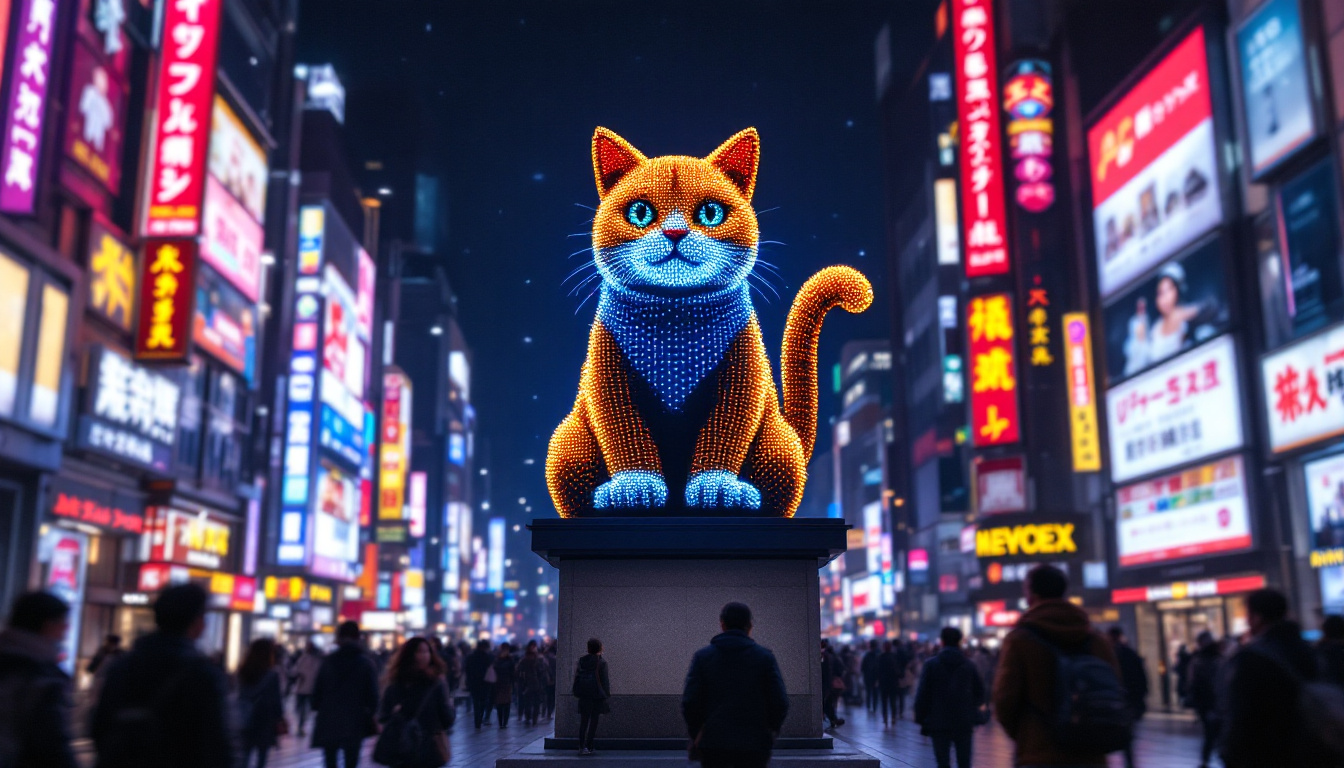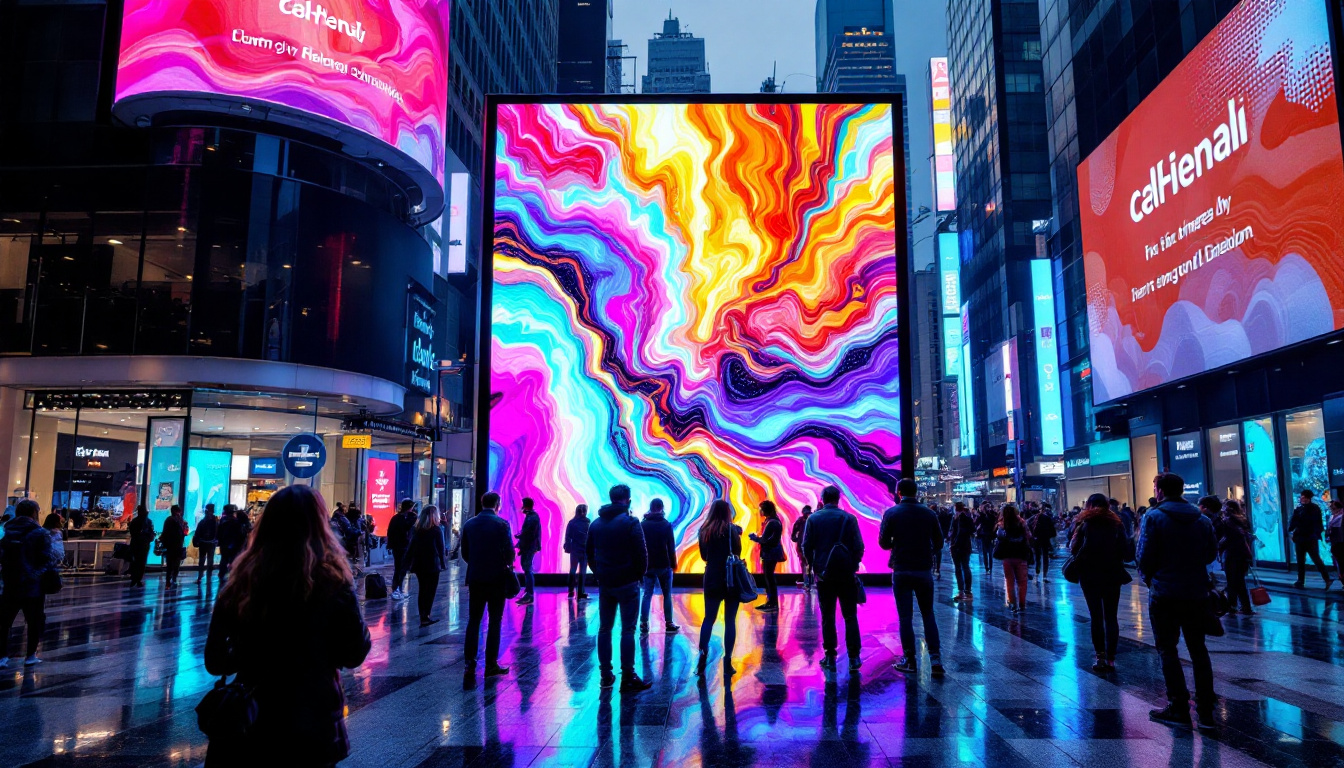In the world of modern technology, LED displays have become ubiquitous, transforming how we experience visual content. From large outdoor billboards to small handheld devices, these displays offer vibrant colors and exceptional clarity. This article delves into the intricacies of LED displays, focusing on their functionality, types, applications, and the future of this dynamic technology.
Understanding LED Technology
LED, or Light Emitting Diode, is a semiconductor device that emits light when an electric current passes through it. This technology has revolutionized the display industry, offering several advantages over traditional display technologies such as LCD and CRT.
The Basics of LED Functionality
At its core, an LED display consists of numerous tiny LEDs arranged in a grid. Each LED can emit red, green, or blue light, and by varying the intensity of these colors, a full spectrum of colors can be produced. This RGB (Red, Green, Blue) model is fundamental to how images and videos are displayed on LED screens.
When an electric current flows through the semiconductor material in the LED, electrons recombine with holes, releasing energy in the form of photons. This process is known as electroluminescence. The efficiency and brightness of LEDs make them ideal for a wide range of applications, from consumer electronics to large-scale advertising displays. Additionally, advancements in technology have led to the development of various types of LEDs, including organic LEDs (OLEDs) and quantum dot LEDs, each offering unique characteristics that enhance display quality and energy efficiency.
Advantages of LED Displays
LED displays offer numerous advantages that contribute to their widespread adoption. Some of the most notable benefits include:
- Energy Efficiency: LED displays consume significantly less power compared to traditional display technologies, making them more environmentally friendly.
- Longevity: With a lifespan of up to 100,000 hours, LEDs outlast many other types of displays, reducing the need for frequent replacements.
- Brightness and Clarity: LED displays provide superior brightness and contrast, making them suitable for both indoor and outdoor environments.
- Thin and Lightweight: The compact nature of LED technology allows for thinner and lighter displays, facilitating innovative design possibilities.
Moreover, the rapid response time of LEDs allows for smoother motion and less blurring in fast-paced video content, making them particularly popular in gaming and sports broadcasting. The ability to create flexible and curved displays has also opened new avenues in design, allowing for immersive experiences in both commercial and residential settings. As technology continues to evolve, the integration of smart features into LED displays, such as touch sensitivity and connectivity options, is further enhancing user interaction and functionality.
In addition to their use in screens, LEDs are increasingly being utilized in various lighting applications, from residential to commercial spaces. Their ability to produce a wide range of colors and their dimmability make them ideal for creating ambiance and enhancing the aesthetic appeal of any environment. Furthermore, the growing trend towards smart homes has led to the development of LED lighting systems that can be controlled remotely, allowing users to adjust brightness and color temperature according to their preferences, thereby enhancing both convenience and energy savings.
Types of LED Displays
There are several types of LED displays, each designed for specific applications and environments. Understanding these types is crucial for selecting the right display for a given purpose.
Direct View LED Displays
Direct view LED displays consist of individual LEDs that are directly visible to the viewer. These displays are commonly used in large outdoor advertising billboards and stadium screens. Their ability to produce bright images in direct sunlight makes them ideal for outdoor applications.
Direct view LED technology has evolved significantly, with advancements in pixel pitch (the distance between the centers of two adjacent pixels) allowing for higher resolution displays. This has enabled the creation of stunning visuals that can captivate audiences from a distance. Furthermore, many direct view LED displays now incorporate dynamic content capabilities, allowing advertisers to change messages in real-time, which can enhance engagement and drive consumer action.
Additionally, the modular design of direct view LED displays allows for easy scalability, meaning they can be configured to fit various sizes and shapes, making them versatile for different installation environments. This adaptability has led to their increasing use in creative applications, such as art installations and immersive environments, where the display itself becomes a part of the artistic experience.
LED Backlit Displays
LED backlit displays use LEDs to illuminate an LCD panel from behind. This combination allows for enhanced brightness and contrast compared to traditional LCDs that use fluorescent backlighting. LED backlit displays are prevalent in televisions, computer monitors, and laptops.
This type of display benefits from the energy efficiency of LEDs while maintaining the color accuracy and detail provided by LCD technology. As a result, LED backlit displays have become the standard for many consumer electronics. The introduction of local dimming technology in some LED backlit displays further improves contrast ratios by allowing specific areas of the screen to be dimmed or brightened independently, enhancing the overall viewing experience, especially in darker scenes.
Moreover, the thin profile of LED backlit displays has contributed to the trend of ultra-slim televisions and portable devices, making them more aesthetically pleasing and easier to integrate into various living and working spaces. As manufacturers continue to innovate, we can expect to see even more enhancements in color reproduction and energy efficiency in future models.
Organic LED (OLED) Displays
Organic LED (OLED) displays represent a significant advancement in display technology. Unlike traditional LEDs, OLEDs use organic compounds that emit light when an electric current is applied. This allows for greater flexibility in design and the ability to create ultra-thin displays.
OLED displays offer exceptional color accuracy, deep blacks, and wide viewing angles. They are commonly found in high-end televisions and smartphones, providing an immersive viewing experience. However, the production cost of OLED technology remains higher than that of conventional LED displays. As manufacturing processes improve and scale, it is anticipated that the costs will gradually decrease, making OLED technology more accessible to a broader audience.
Additionally, OLED displays are known for their fast response times, which make them ideal for displaying high-speed video content without motion blur. This characteristic has made them particularly popular in gaming monitors, where performance is critical. Furthermore, the flexibility of OLED technology allows for innovative applications, such as curved and foldable displays, paving the way for new design possibilities in consumer electronics and beyond.
Applications of LED Displays
The versatility of LED displays has led to their adoption across various industries and applications. From advertising to healthcare, these displays serve numerous purposes.
Advertising and Marketing
One of the most prominent applications of LED displays is in advertising and marketing. Digital billboards and signage utilize LED technology to capture attention with vibrant visuals and dynamic content. These displays can be easily updated, allowing businesses to promote products and services in real-time.
Moreover, the ability to display video content on LED screens enhances engagement, making them a powerful tool for marketers. The flexibility to change messages quickly also enables targeted advertising, reaching specific demographics based on time and location.
Entertainment and Events
LED displays play a crucial role in the entertainment industry, particularly in concerts, sports events, and theatrical performances. Large LED screens are often used to display live feeds, graphics, and animations, enhancing the overall experience for attendees.
Additionally, LED technology has transformed stage design, allowing for innovative setups that incorporate screens into the performance. This integration creates immersive environments that captivate audiences and elevate the entertainment value.
Healthcare and Medical Applications
In the healthcare sector, LED displays are utilized for various purposes, including patient monitoring, diagnostic imaging, and information dissemination. high-resolution LED screens are crucial in medical imaging, providing clear and detailed visuals for accurate diagnoses.
Moreover, LED displays are used in hospitals and clinics to convey important information to patients and visitors. Digital signage can provide directions, health tips, and emergency alerts, improving communication within healthcare facilities.
The Future of LED Display Technology
The future of LED display technology looks promising, with ongoing advancements set to enhance performance and expand applications. Several trends are shaping the evolution of LED displays.
MicroLED Technology
MicroLED is an emerging technology that involves using microscopic LEDs to create displays. This innovation promises to deliver even higher resolution, improved brightness, and better energy efficiency. MicroLED displays can potentially overcome some limitations of OLED technology, such as burn-in issues and production costs.
As manufacturers continue to explore microLED technology, it is expected to find applications in everything from televisions to wearable devices, revolutionizing how visuals are presented across various platforms.
Flexible and Transparent Displays
Another exciting trend in LED display technology is the development of flexible and transparent displays. These innovations allow for new design possibilities, enabling screens to be integrated into various surfaces, including clothing, windows, and furniture.
Flexible displays can bend and curve, creating unique visual experiences that were previously unimaginable. Transparent displays, on the other hand, can overlay digital content onto real-world environments, opening up new avenues for augmented reality applications.
Artificial Intelligence Integration
As artificial intelligence (AI) continues to advance, its integration with LED display technology is becoming increasingly prevalent. AI can enhance the functionality of displays by enabling smart content management, personalized advertising, and improved user interactions.
For instance, AI algorithms can analyze viewer behavior and preferences, allowing for tailored content delivery that resonates with specific audiences. This level of personalization can significantly enhance engagement and effectiveness in advertising and other applications.
Conclusion
LED displays have transformed the way visuals are presented and consumed across various sectors. Their energy efficiency, longevity, and vibrant color reproduction make them a preferred choice for many applications. As technology continues to evolve, the future of LED displays promises even more exciting developments, including microLED, flexible designs, and AI integration.
Understanding LED technology and its applications is essential for anyone looking to leverage its benefits in business or personal use. Whether for advertising, entertainment, or healthcare, LED displays are set to remain a vital part of our visual landscape for years to come.
Discover LumenMatrix LED Display Solutions
Ready to elevate your visual experience with the latest in LED technology? LumenMatrix is at the forefront of innovation, offering a diverse range of LED display solutions tailored to your needs. From captivating Indoor and Outdoor LED Wall Displays to dynamic Vehicle and Sports LED Displays, our products are designed to make your brand stand out. Explore the possibilities with our LED Poster Displays, Floor LED Displays, Custom LED Solutions, All-in-One LED Displays, and revolutionary LED Transparent Displays. Embrace the future of visual communication with LumenMatrix and create unforgettable impressions. Check out LumenMatrix LED Display Solutions today and transform your space into a vibrant canvas of light and color.


